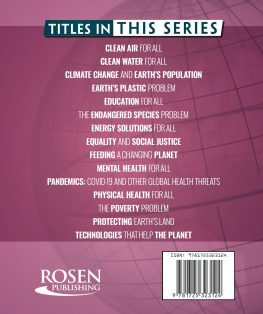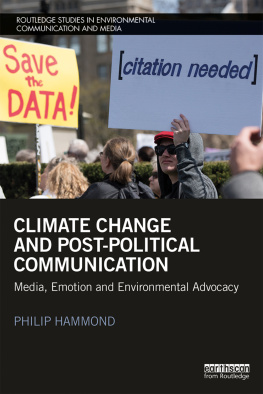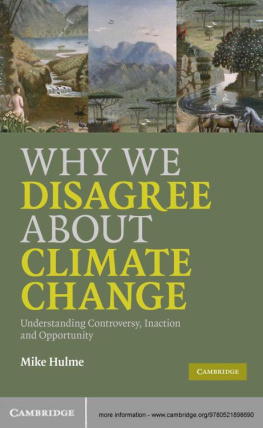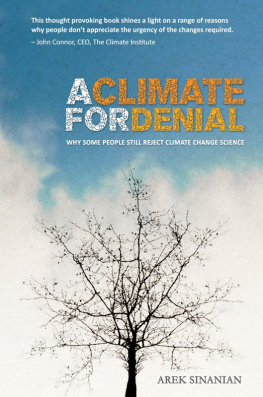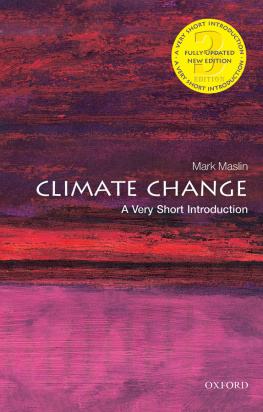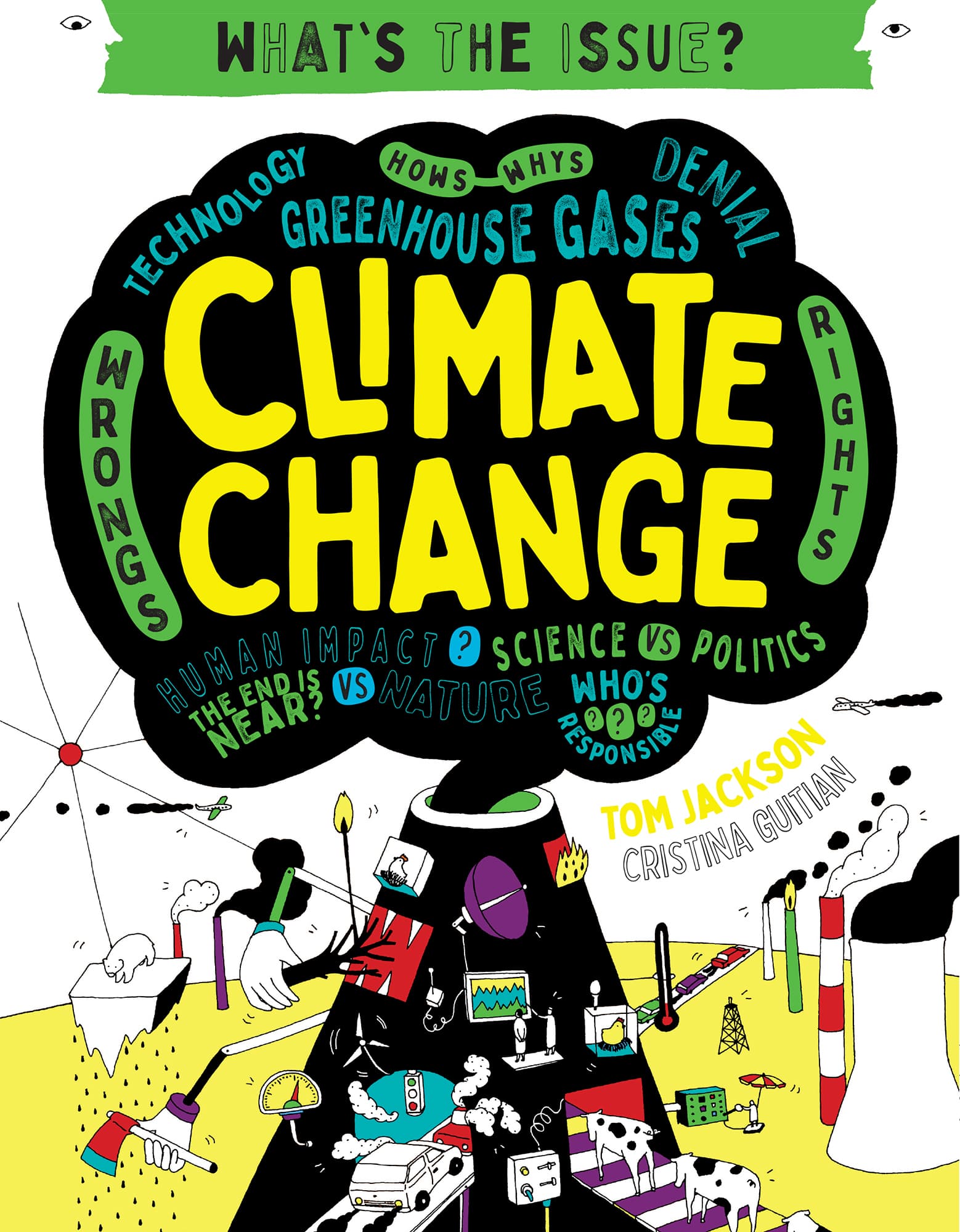The great majority of weather scientists agree that the world is getting warmer very fast. But dont get the sunglasses and sandals out just yet. In the last 140 years, the average temperature of the whole world has gone up 1.44F. Our perceptions of temperature are barely able to detect such a difference, and it is dwarfed by the rise and fall of air temperatures every day. So whats the big deal?
ALL ABOUT ENERGY
Temperature is a measure of the average amount of heat energy inside a substance. Earths atmosphere isnt very hoton average its about 57Fbut theres so much air (5.5 million trillion tons of it) that it contains an unimaginably large amount of energy. This energy powers the worlds weather, so even a small rise in global temperature indicates a huge increase in energy churning up the atmosphereand that means more extreme weather among other things.
WHATS WHAT?
STATS FACTS
We will come across all kinds of statistical terms in this book. You might have come across them before, but its still worth brushing up on them.
Range: This number is the difference between the maximum (highest) and minimum (lowest) values.
Mean: There will be a lot of talk of averages, and in most cases that means the mean. The mean is the number you get when you add a set of numbers together and then divide them by the number of numbers.
Per capita: This means "by head" and it means dividing up a value according to the number of people involved. A very big country might produce more pollution than a very small one, but per capita it might be the smallest nation that is the dirtiest.
Understanding these terms will help you understand the climate statistics in this book.
WHAT DOES CLIMATE CHANGE MEAN FOR YOU?
The world has gotten warmer and looks likely to get hotter still. What will that mean for you and for the rest of the world? What is causing the changes? Can we do anything about itand if so, what? The questions dont get much bigger than the ones around climate change and global warming.
WHATS THE WEATHER DOING?
T o understand changes in the climate you need to know what weather is. Climate is the big picture overview of the kinds of weather found at a particular location at a particular time of year. While weather changes every day (or every hour in some places), climate changes take decades.
Water vapor , the gas version of water, is not included in the list of gases in the air because its levels go up and down, from more or less zero to four percent of the total. Anything above that and it will soon start to rain!
THE ATMOSPHERE
Earths atmosphere is never still. The movement of the atmosphere makes air masses of different types collide, and that creates wind, rain, and clouds. Earths air is a mixture of gases: 78 per cent nitrogen, 21 per cent oxygen, and 0.9 per cent argon. That leaves 0.1 per cent for everything else, including carbon dioxide (0.04 per cent) and a whole cocktail of trace gases.
AIR TEMPERATURE
Global warming affects air temperature, among other things, which we will look at later. We now know that heat energy is simply the motion of atoms and molecules in a substance. When the temperature is higher, there is more heat energy and the particles move faster. So, at the molecular level, global warming means that the airs atoms are moving just that bit faster.
AIR PRESSURE
As well as temperature, the other crucial factor in understanding weather is air pressure. This is a measure of the how hard the air is pushing against an object (or itself). The air pushing down from above creates a constant force, but the exact size of this force can vary. Hot air exerts a higher pressure because its fast-moving particles hit harder and more frequently than the particles in cold air.
WHOS WHO?
BLAISE PASCAL
Pressure is measured in units called "pascals." These are named after a seventeenth-century French scientist named Blaise Pascal who proved that the air around us was supplying a constant pushing force. That force is around the same as the weight of 14 pounds pushing on every square inch of your body.



